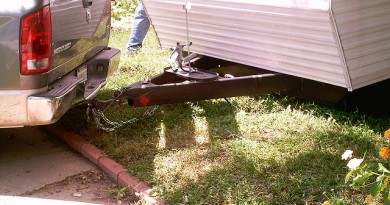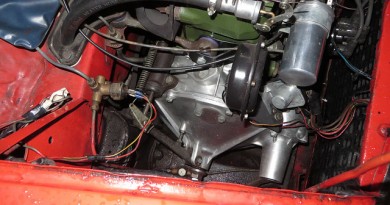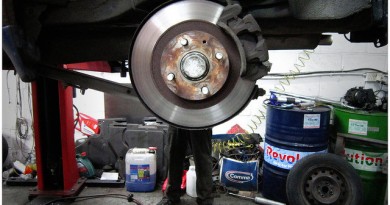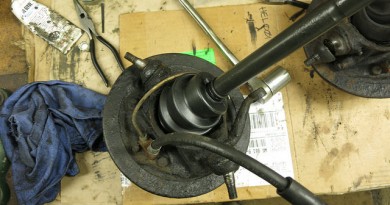How Much Does A Radiator Cost To Repair Or Replace?
Radiator repair cost is a flexible expense; the better maintenance one gives an automobile’s radiator, the less the radiator repair cost (or, heaven forbid, the radiator replacement cost) will be.
Obviously, radiators are just as susceptible to wear and tear, and functional damage, as any other automotive part or system. Hoses and housing can be compromised; cores can even break under extreme weather conditions. This means that if there is a problem with the cooling system of an automobile, immediate repairs are necessary, either as a do-it-yourself project or at a service station (or, if the driver is feeling flush, right at the dealership).
Radiator Service Cost
Massive radiator repair cost can be avoided with regular service. At least four times a year, one should lube and oil the car, either at a lubrication station or as a do it yourself project, and that’s the perfect time to check radiator levels (they should be check weekly at least) and note any dirty or dingy fluid exuding from the system, which might indicate the need for a radiator flush. Small leaks can be repaired at this juncture, as can leaky hoses.
This procedure should not involve much radiator repair cost. A small hole in the radiator, or even multiple small leaks, can be filled by using a number of substances (such as “Bars Leak” and other chemical compounds) which can be found at any automotive parts service store, usually retailing between $12 and $15. One winter-bound consumer even put oatmeal in his radiator in an extreme emergency; the oatmeal sank to the bottom of the tank, expanded and filled a leaking hole until he could have the system properly serviced.
Radiator Repair Cost
No one is suggesting that breakfast cereal is an adequate method of radiator repair, but an actual radiator, riddled with holes, will not be helped by oatmeal. Repair is indicated for the system, and the sooner the better.
In a pinch, duct tape will repair most radiator hose leaks at least temporarily; the use of a blocking agent (such as mentioned above) will be a temporary stopgap for radiator holes. Even if the damage is extensive, repair may still be possible.
Cracked Radiator Repair Cost
A cracked radiator must be repaired or replaced immediately, as the cooling system of a car, if it’s out of commission, can damage the vehicle’s engine and other systems extensively if not attended to at once. A new radiator is probably called for in this case rather than a parts yard pick-up, if one is ready to replace rather than repair.
However, there is one economical alternative to radiator replacement if the crack is not extensive. There are numerous plastic radiator repair kits that contain sealants and other compounds that can stop leaks without the need for radiator removal. The epoxy and resin compounds are very long lasting, and are especially effective for most plastic radiators. For aluminum or metal, however, replacement is probably the best option for the consumer.
The complete radiator repair cost for the kit is $15 to $20, depending on the type of kit purchased.
Radiator Replacement Cost
Fortunately radiators are a wonderful do-it-yourself project for the mechanic who happens to be handy around an automobile, and who has a knack for finding junkyard parts. A parts yard will charge between $40 and $50 for a typical radiator salvaged from the same model; they will usually allow the customer to fill and test the tank for leaks. In all, it’s a very inexpensive radiator replacement cost.
If one wants a new radiator, and needs it installed, radiator replacement cost runs into real money. For a radiator with holes, the parts yard radiator at $50-$100 will usually suffice. For a cracked model, however, replacement is the best alternative to not operating the vehicle at all.
On average, a new radiator runs between $200 and $300 (most models should not cost more than this; one should check the radiator prices at numerous sites to avoid unreasonable markup). This basic radiator cost will be augmented by approximately $120 to $160 per hour labor; one should figure in two hours (a grand total of $620 or so) as part of the radiator replacement cost.
Radiator Installation Cost
As much as a consumer may pride himself on his status as a do it yourself car mechanic, there are circumstances (such as replacing a metal radiator with numerous connections, include computer hookups) when one should trust a professional to do the job.
Radiator installation usually runs around $500 for a low end job—this figures in up to two hours of moderate labor, with a $200 new radiator as the replacement part. Adding hoses or a water pump will add between $25 and $50 for a hose, and between $35 and $80 for a new water pump.
Radiator Hose Replacement Cost
As noted, the best time to replace radiator hoses is when the quarterly system check reveals cracks, creases or small holes in them. The cost for replacing these parts is not extensive, certainly not in league with major radiator prices: a radiator hose is roughly $20 to $35 for a replacement on an American-made car, although it can run $50 or more for a non-American make. They can be installed in a few minutes, so labor is minimal. It is best if the hose replacement is done at a service station, if the procedure is done with other mechanical fixes at the same time.
Aftermarket Radiators And High Performance Radiators
Aftermarket radiators are designed especially to act as replacement radiators; they are mandated to be OEM equivalent and can be easily installed by the do it yourselfer. Usually, aftermarket radiators come with the system brackets already attached for easy installation. On average, an aftermarket replacement radiator, brand new, will run around $200 to $300, with some higher ends at $400 and more.
Finally, there are high performance radiators or “racing” radiators, which come quite inexpensively. This a reasonable marketing ploy to lower radiator repair cost, since heavy and extended “racing” use—sometimes literally—takes a toll on such a radiator, and it needs replacing far more often than a regular radiator use for everyday driving. Most models begin around $120 to $200, and are usually made of high durability aluminum to enhance performance and cooling strength.
- 902SHARES






